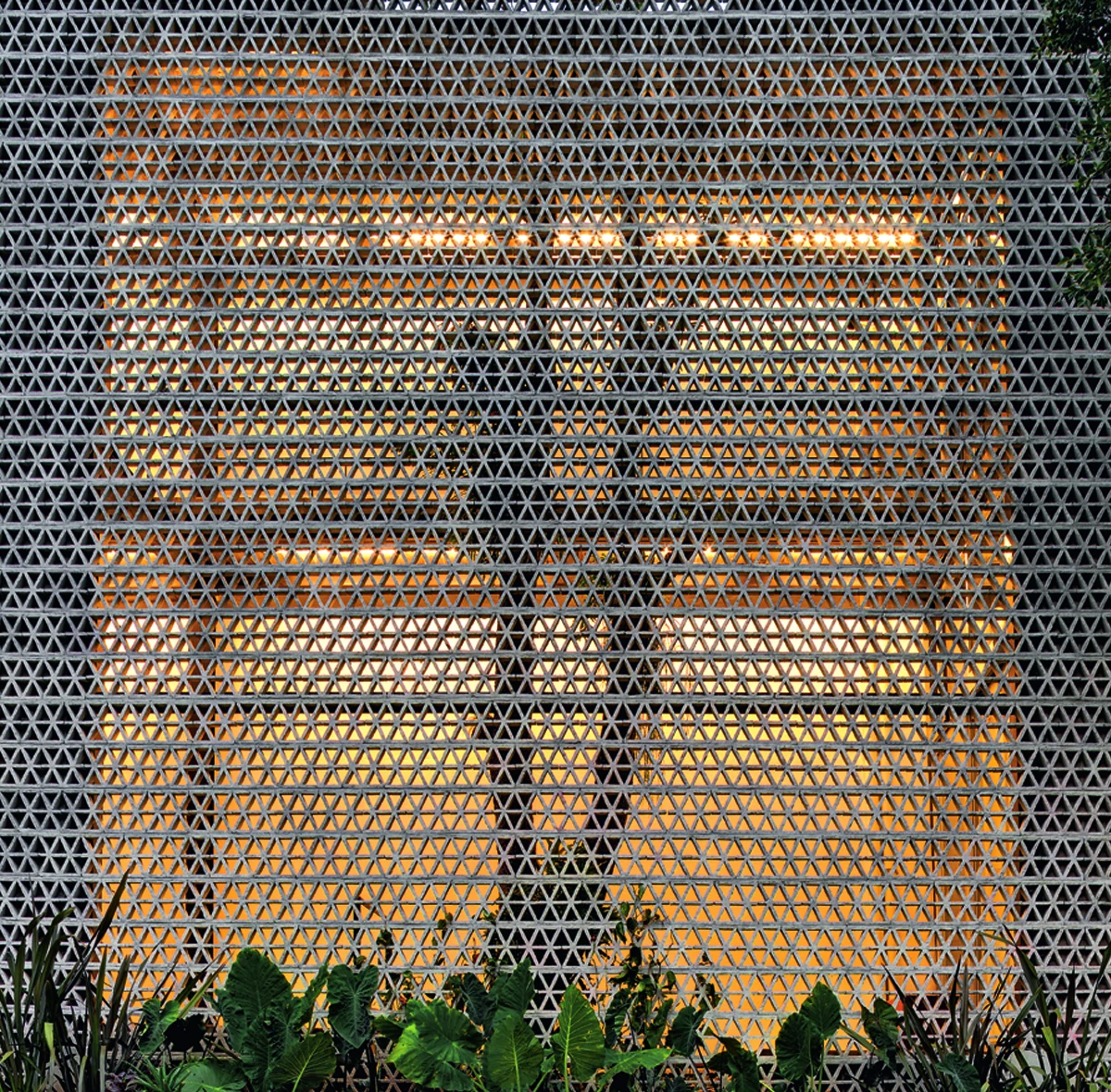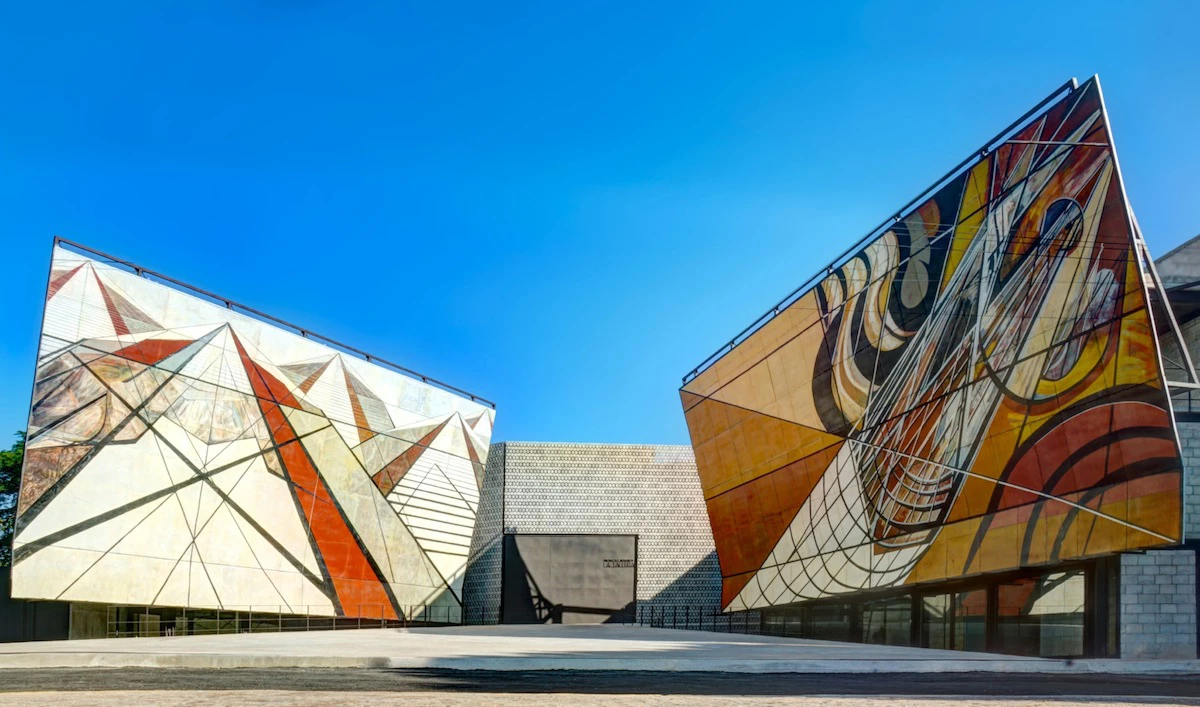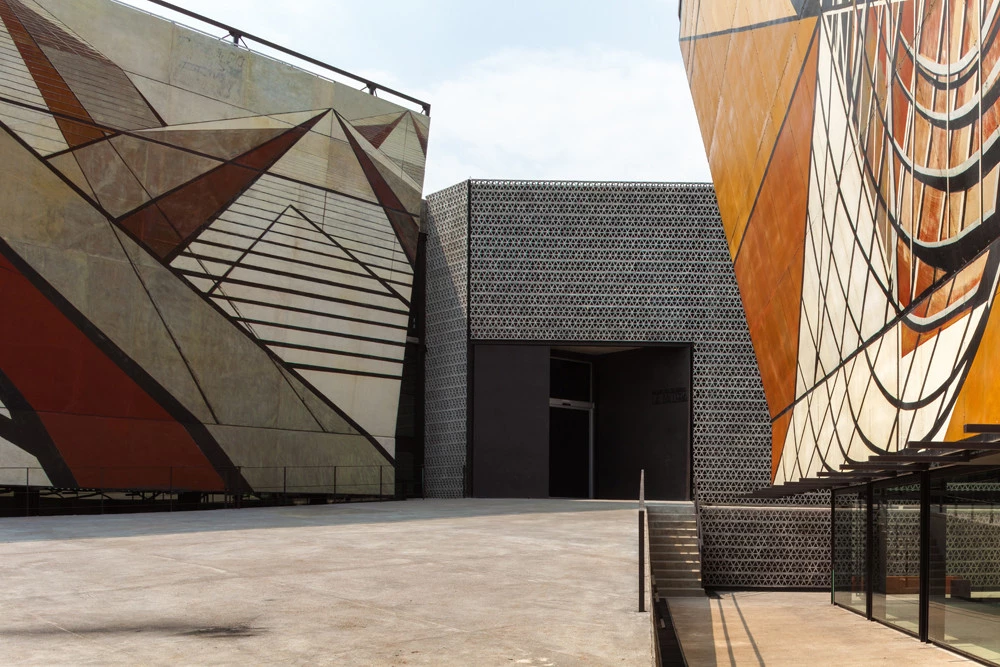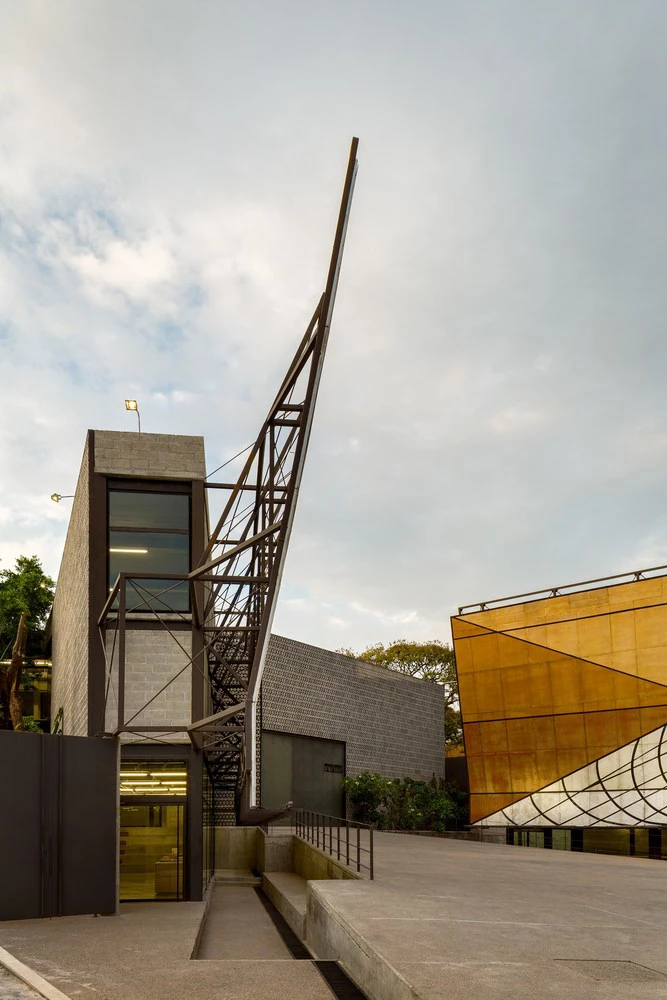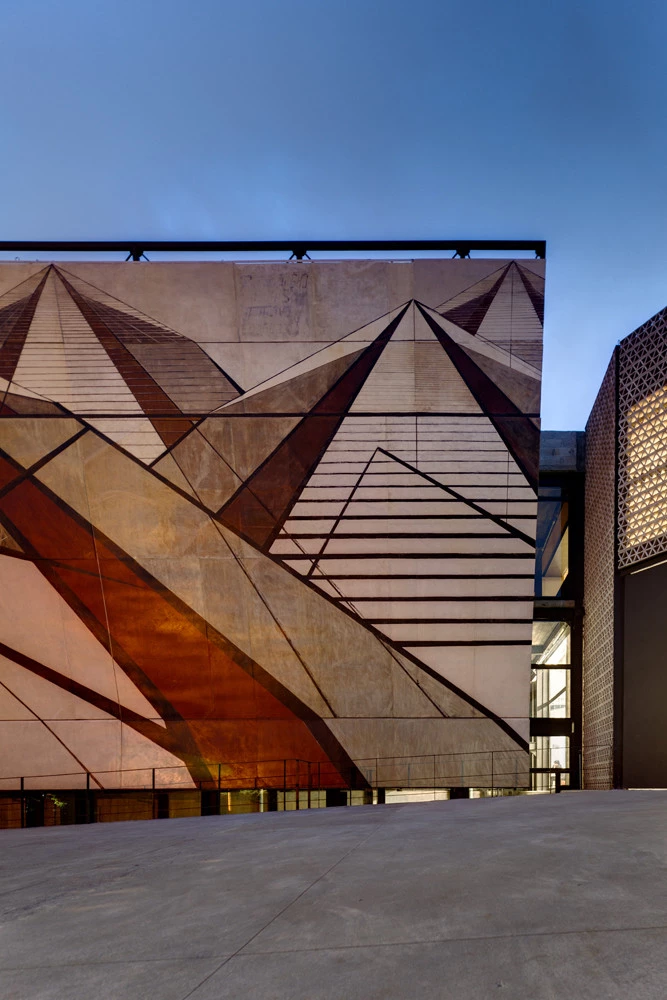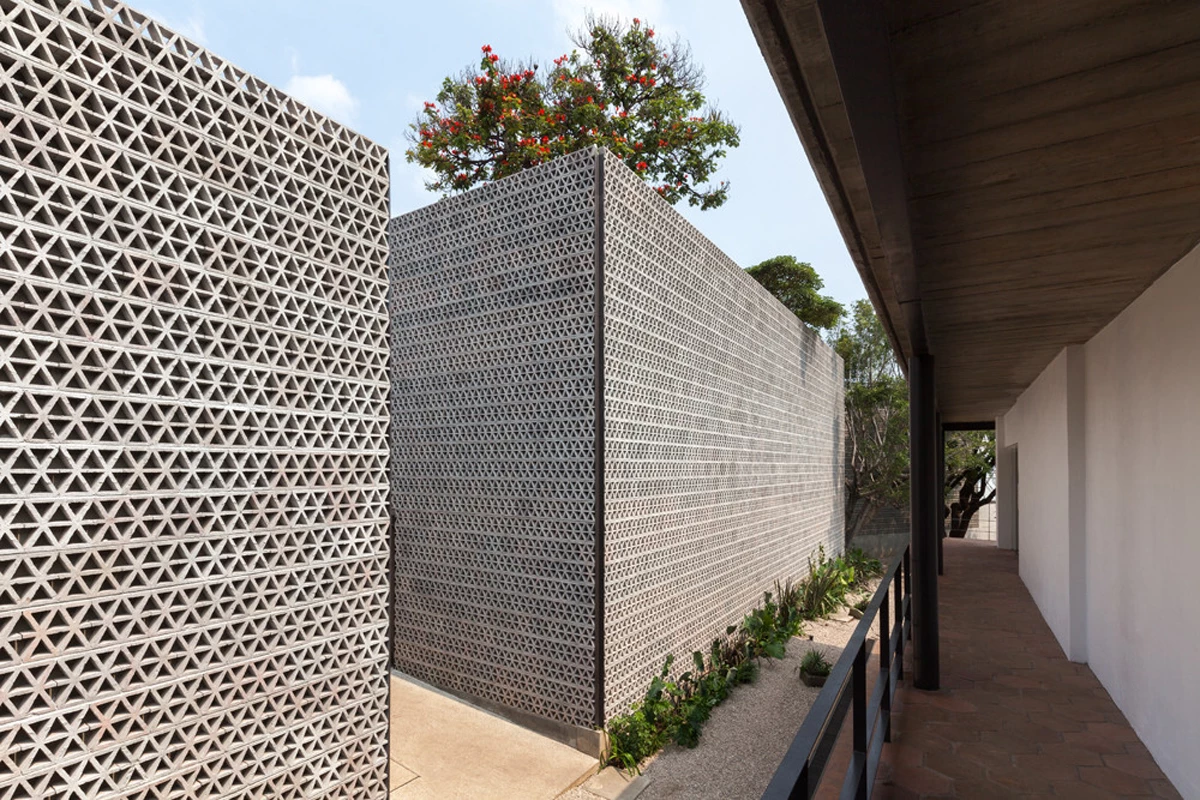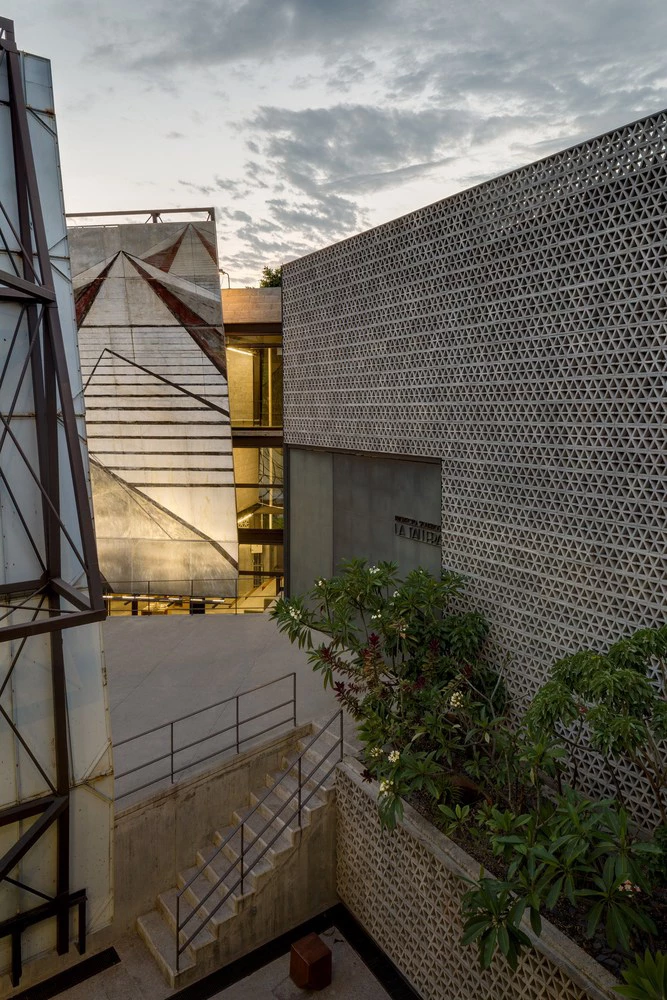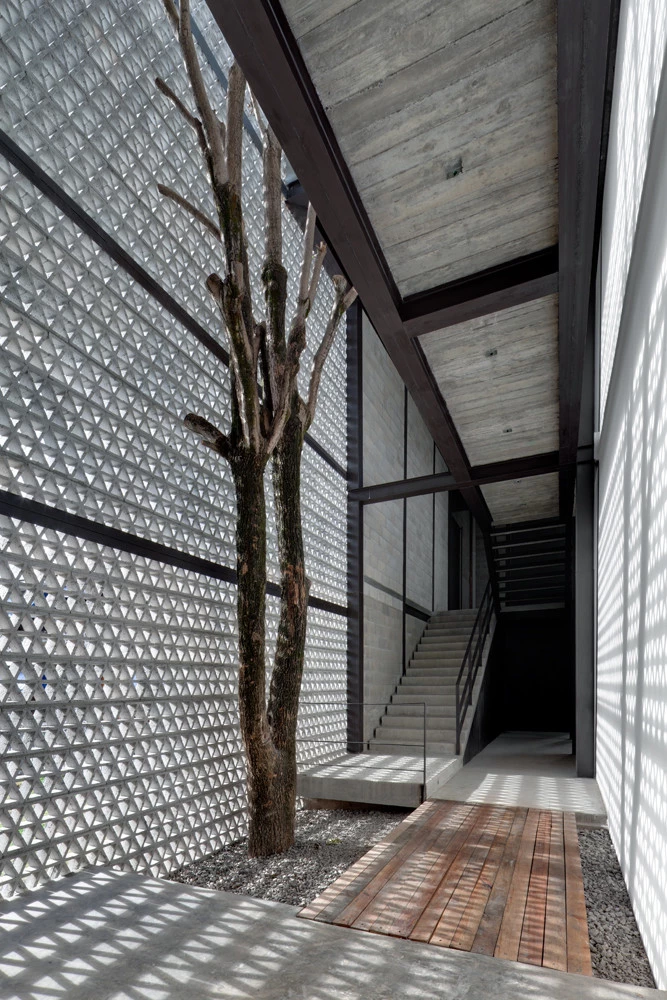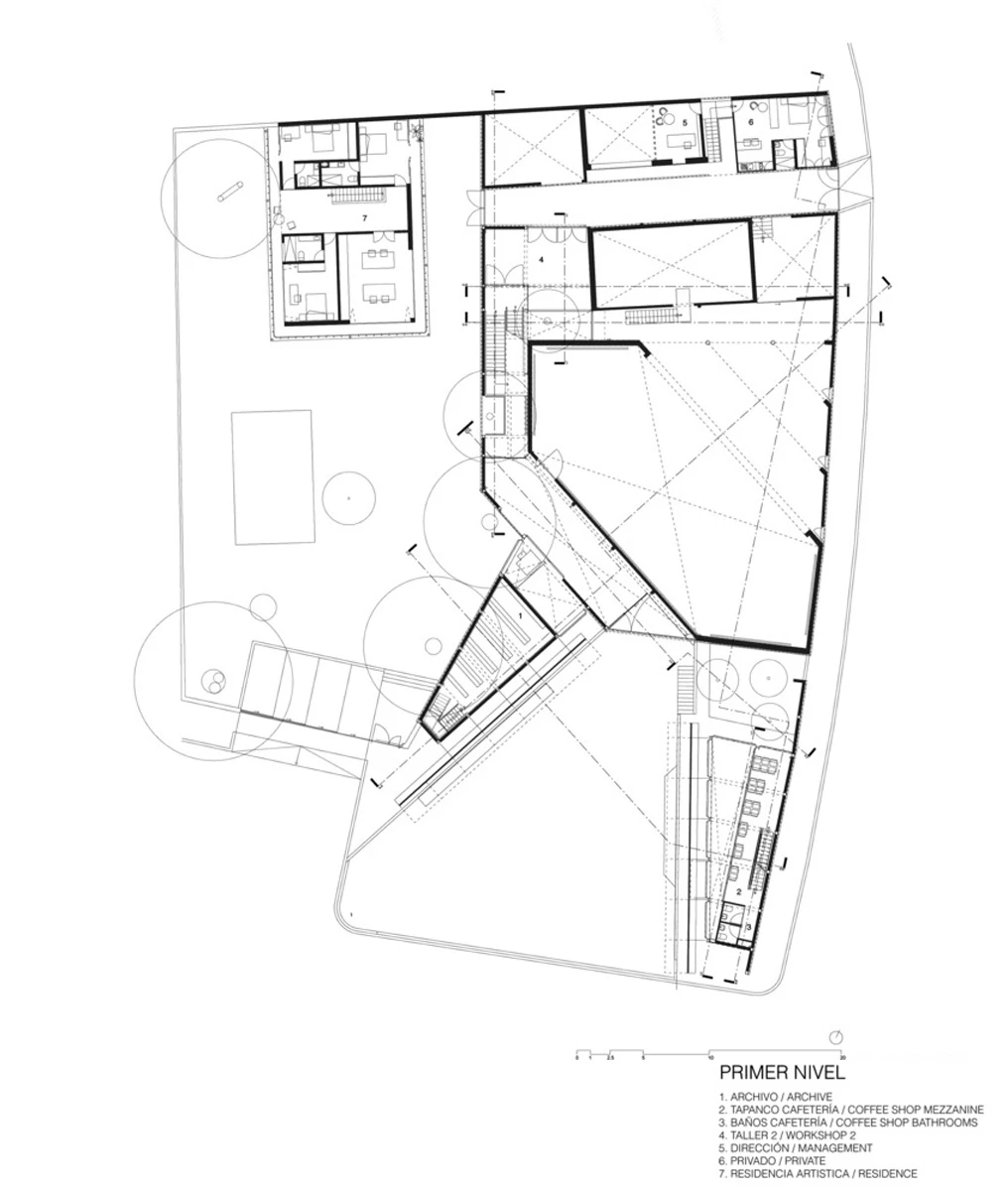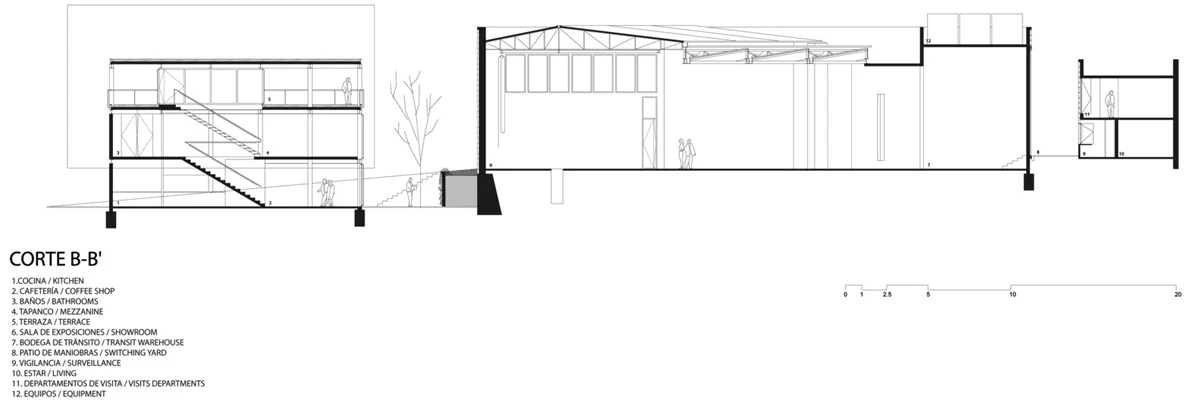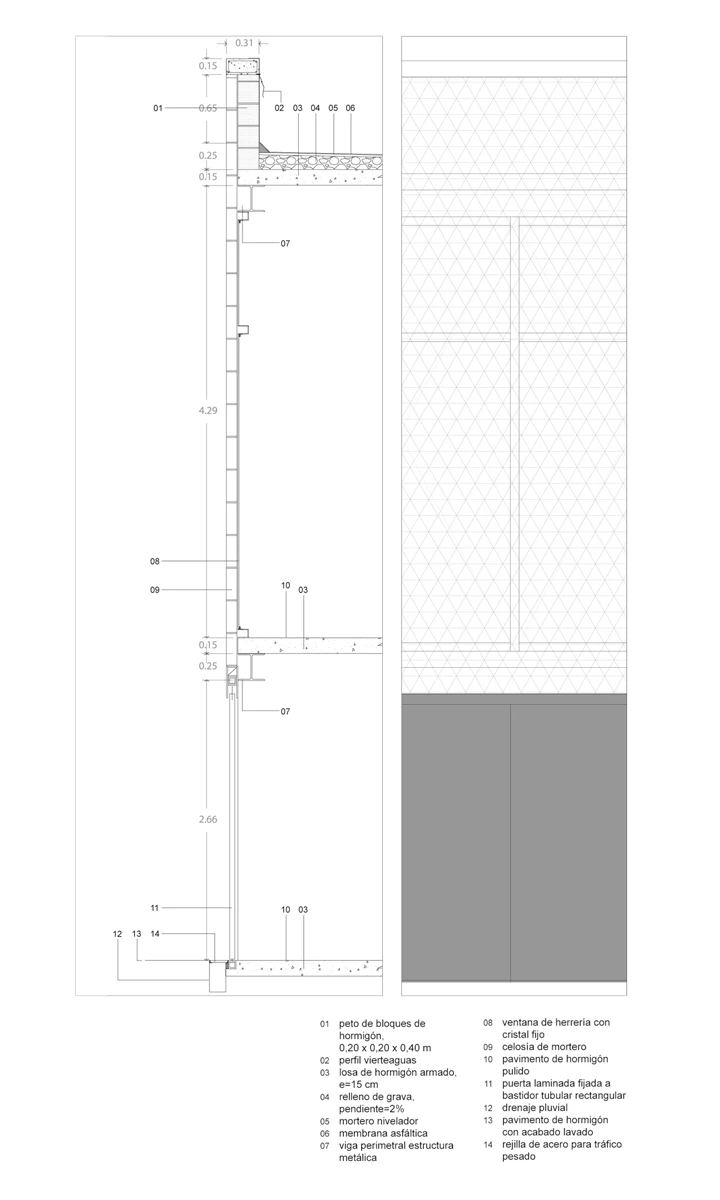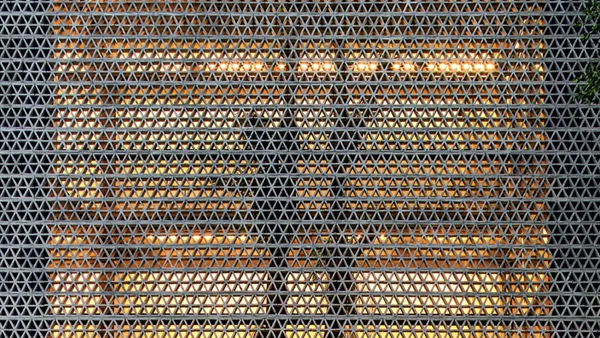La Tallera Siqueiros is a museum, workshop, and artists’ residence built on and around a 1965 construction that was the home and studio of the muralist David Alfaro Siqueiros in the final years of his life. A space for art production and criticism, it aims to be a workplace that upholds the idea Diego Rivera and Siqueiros had had since 1920: a mural painting atelier in which to experiment with new techniques, materials, geometric aspects, perspectives, and so on.
In a simple gesture, the intervention of the Mexican architect Frida Escobedo opens the museum courtyard onto an adjacent plaza by rotating a series of murals from their original, vertical positions. This creates a connection between the museum-atelier and the areas around it. The murals act as a visual and programmatic link with the plaza, delimiting, as they do, the museum’s public areas, such as the café and a store, and as a divider between the artists’ living accommodations and the museum-atelier.
Rotating the murals changes the usual relationship between gallery and visitor, and creates an interaction of planes, between walls and murals, which is revealed as one crosses the perimetral lattice from the urban context. This skin of concrete blocks with triangular holes makes a horizontal sculptural shield around the work of Siqueiros. Frida Escobedo Rafael Gamo
